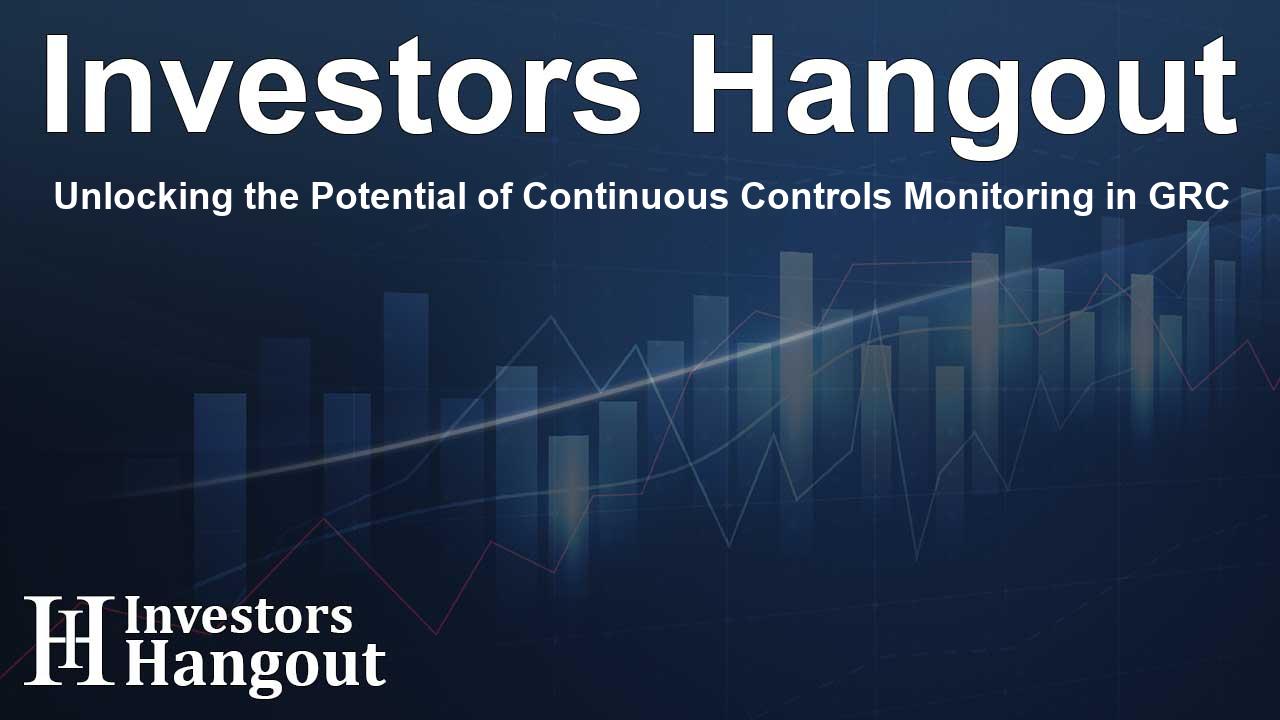Unlocking the Potential of Continuous Controls Monitoring in GRC

Understanding Continuous Controls Monitoring
Continuous Controls Monitoring (CCM) has emerged as a pivotal strategy for organizations aiming to streamline their governance, risk, and compliance (GRC) processes. As we usher in a new era of digital transformation, the need for sophisticated and automated solutions has never been greater. Insights from a recent report highlight that a staggering 94.2% of Chief Information Security Officers (CISOs) share the belief that CCM can significantly enhance both compliance and security outcomes.
Challenges Faced by Organizations
Despite the clear advantages of implementing CCM, many organizations are grappling with persistent challenges. Over half of CISOs report difficulties in evolving their compliance programs, primarily due to data silos and the absence of centralized systems. In fact, 42% cite fragmented information as a significant barrier, and the alarming statistic that 95% of CISOs don’t perceive their current compliance programs as optimized for continuous improvement underscores the urgency for modernization.
Budget Constraints in GRC
Budgetary limitations pose another formidable challenge in the adoption of effective GRC tools. A noteworthy 71.8% of CISOs rank cost as the top priority when selecting compliance solutions. Furthermore, 55.8% view their security and compliance initiatives as mere cost centers rather than essential components that can drive business success. This mindset highlights the need for a cultural shift in how organizations perceive compliance processes, urging them to recognize the long-term value they can provide.
Embracing Automation
With automation being hailed as a key opportunity to reduce manual processing, only 17.9% and 13% of CISOs have ventured into adopting Generative AI and Compliance-as-Code tools, respectively. This disparity indicates a substantial gap between recognizing potential benefits and successfully implementing these technologies. As security landscapes evolve, organizations must harness the power of these emerging tools to stay ahead of risks and compliance challenges.
The Role of CCM in GRC Modernization
CCM has established itself as a vital solution for organizations seeking to not only manage but also enhance their GRC measures. The insights gathered from hundreds of CISOs in a collaborative study reveal a pressing need for scalable, automated solutions capable of addressing the inefficiencies and risks arising from outdated systems. This requires a concerted effort from security leaders to facilitate the alignment of security and compliance teams, thereby fostering a culture of collaboration and efficiency.
Building Resilience Through Continuous Monitoring
As organizations navigate an increasingly complex regulatory landscape, establishing a robust CCM framework offers a pathway to improved resilience. The collaborative efforts of security experts and researchers indicate that empowering organizations through CCM can lead to streamlined operations and enhanced responsiveness to evolving regulations. Creating clear communication channels between compliance and security teams is paramount to successfully navigating these complexities.
Key Insights from the Report
As organizations look ahead, the findings from this comprehensive analysis serve as a crucial guide. Key insights indicate that while budgetary limitations and cultural resistance to change remain challenges, there is a clear and strong push toward modernization. The report showcases persistent challenges in GRC, emphasizing the importance of synthesizing feedback directly from the CISO community.
Invaluable Resources for GRC Leaders
CISOs understand that delivering trusted actionable insights is essential in tackling the increasing challenges associated with GRC. The collaborative efforts between organizations and communities provide invaluable resources for security leaders. Engaging directly with peers and sharing best practices equips them to tackle present complexities and prepare for future challenges that lay ahead.
Frequently Asked Questions
What is Continuous Controls Monitoring (CCM)?
CCM is a strategy aimed at enhancing governance, risk, and compliance processes by continuously monitoring controls to ensure they are effective and responsive to changes.
Why is CCM important for organizations?
CCM is vital as it helps organizations automate workflows, improve visibility, reduce risks, and align security measures effectively with compliance efforts.
What challenges do CISOs face in implementing GRC?
CISOs face challenges such as data silos, budget constraints, and a lack of centralized systems, which hinder the maturation of compliance programs.
How can automation play a role in GRC?
Automation can significantly reduce manual processing tasks, thereby improving efficiency and allowing organizations to adapt faster to regulatory demands.
What are the findings from the recent GRC report?
The report indicates a growing need for CCM among CISOs, highlighting the challenges faced, particularly once again by budget concerns, and the push for modernized processes.
About The Author
Contact Evelyn Baker privately here. Or send an email with ATTN: Evelyn Baker as the subject to contact@investorshangout.com.
About Investors Hangout
Investors Hangout is a leading online stock forum for financial discussion and learning, offering a wide range of free tools and resources. It draws in traders of all levels, who exchange market knowledge, investigate trading tactics, and keep an eye on industry developments in real time. Featuring financial articles, stock message boards, quotes, charts, company profiles, and live news updates. Through cooperative learning and a wealth of informational resources, it helps users from novices creating their first portfolios to experts honing their techniques. Join Investors Hangout today: https://investorshangout.com/
The content of this article is based on factual, publicly available information and does not represent legal, financial, or investment advice. Investors Hangout does not offer financial advice, and the author is not a licensed financial advisor. Consult a qualified advisor before making any financial or investment decisions based on this article. This article should not be considered advice to purchase, sell, or hold any securities or other investments. If any of the material provided here is inaccurate, please contact us for corrections.
